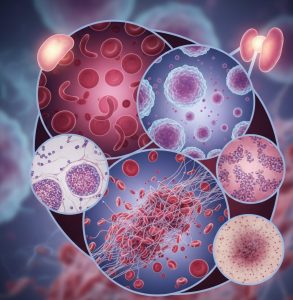The Connection Between Cardiovascular Health and Women’s Health

Women's Health
Cardiovascular disease (CVD) is the leading cause of death in women worldwide. Although traditionally seen as a “man’s disease,” CVD affects women just as frequently, and it presents differently in women than in men. In this article, we will explore the connection between cardiovascular health and women’s health.
Women and Cardiovascular Health
Cardiovascular disease includes conditions that affect the heart and blood vessels, such as coronary artery disease, heart attacks, and stroke. Women are at an equal risk of developing CVD as men, but their risk factors and symptoms differ.
Risk Factors for Women
Some risk factors for CVD are the same for both men and women, such as high blood pressure, high cholesterol, smoking, and obesity. However, women have unique risk factors, including hormonal changes during menopause, pregnancy complications, and autoimmune diseases.
Symptoms in Women
Women’s symptoms of CVD can differ from men’s and can be more subtle or even absent. Common symptoms in women include shortness of breath, fatigue, nausea, vomiting, and pain in the neck, jaw, or upper back. Women are also more likely to experience “silent” heart attacks, where they have no chest pain but experience other symptoms.
Prevention and Treatment
Prevention and early detection are key to promoting women’s cardiovascular health. Regular exercise, a healthy diet, and managing stress are all essential for preventing CVD. Women should also be aware of their unique risk factors and discuss them with their healthcare provider. Treatment options for CVD include lifestyle changes, medication, and medical procedures such as stents or bypass surgery.
Sure, here are some additional points to consider when discussing the connection between cardiovascular health and women’s health:
Hormonal Changes and Cardiovascular Health
Hormonal changes, particularly during menopause, can have a significant impact on women’s cardiovascular health. As estrogen levels decrease, women become more susceptible to developing CVD. Hormone therapy has been used in the past to address this risk, but recent studies have shown that hormone therapy can also increase the risk of other health concerns, such as breast cancer. As such, women should discuss their individual risk factors and the benefits and risks of hormone therapy with their healthcare provider.
Pregnancy Complications and Cardiovascular Health
Pregnancy-related complications, such as gestational diabetes and preeclampsia, can also increase a woman’s risk of developing CVD later in life. Women who experience these complications should discuss their cardiovascular risk with their healthcare provider and make lifestyle changes as necessary.
Autoimmune Diseases and Cardiovascular Health
Certain autoimmune diseases, such as lupus and rheumatoid arthritis, can also increase a woman’s risk of developing CVD. Women with autoimmune diseases should work closely with their healthcare provider to manage their condition and reduce their risk of developing CVD.
Addressing Disparities in Cardiovascular Health
Women from certain racial and ethnic groups are at a higher risk of developing CVD than others. African American women, for example, have a higher prevalence of high blood pressure and obesity, which are risk factors for CVD. It is important to address these disparities and promote cardiovascular health for all women.
Overall, it is important for women to be aware of their unique risk factors for CVD and take proactive measures to promote cardiovascular health. This includes regular exercise, a healthy diet, managing stress, and working closely with a healthcare provider. By addressing these factors and promoting cardiovascular health, women can reduce their risk of developing CVD and improve their overall wellbeing.
Cardiovascular disease is a major health concern for women and can have devastating consequences if left untreated. Women have unique risk factors and symptoms that require awareness and attention. By taking proactive measures to promote cardiovascular health, women can reduce their risk of developing CVD and improve their overall wellbeing.




